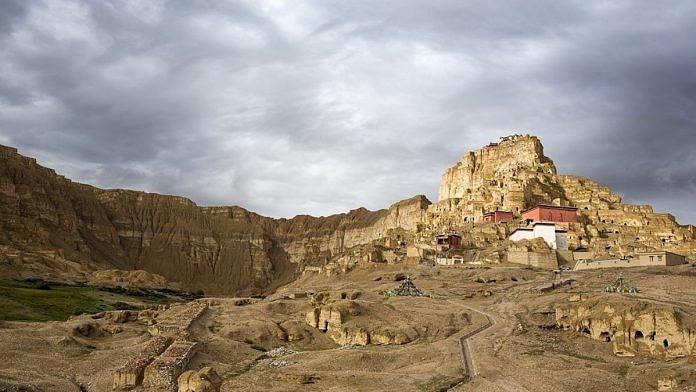New Delhi: Climate change may have contributed to the collapse of the ancient Tibetan Guge kingdom, which eventually fell to a neighbouring Ladakhi kingdom in the mid-17th century, a study has suggested.
According to a report in the South China Morning Post, researchers from China, US and the Netherlands examined sediment samples from lakes in Tibet to understand how low temperatures affected crop yield in the region. It also used 39 samples from a previously announced dataset on lakes in China.
Published in the journal Paleoceanography and Paleoclimatology last month, the study claims that “local temperature fell by about 4°C between the 14th and 17th centuries” which led to “diminished crop production and the kingdom’s downfall”.
The Guge kingdom mainly cultivated barley and the study suggests that “a decline in temperature led to a decreased crop yield”. This may have played a role in the downfall of the kingdom, the study says.
The study also offers a timeline — there was warm climate from 750-1350 AD, then temperatures lowered from 2°C to −2°C during the Little Ice Age, warming again in the 18th century, and finally stabilising after 1800 AD.
As a report in The Financial Times put it, the Guge kingdom is largely considered a “lost civilisation”.
The Guge kingdom
The Guge kingdom began ruling over the Western Himalayan region around the 10th century, following the collapse of the Tubo kingdom, which had maintained frequent contact with the Tang dynasty in China.
According to a 2016 book titled Geo-Architecture and Landscape in China’s Geographic and Historic Context: Volume 1 by researcher Fang Wang, the last Tubo monarch, Langdarma, was assassinated as a result of “suppression of Buddhist policies”.
Kyide Nyimagon, a descendant of Langdarma, formed the Guge kingdom. He also held control over another area in western Tibet, Purang, and the larger Ngari region. That is why the Guge kingdom is also referred to as the Purang-Guge kingdom.
The Guge kingdom was known to be prosperous during its 700-year rule, and is considered to have played a central role in bringing Buddhism to western Tibet. It was considered an independent kingdom.
However, it was defeated in the mid-17th century by the neighbouring Namgyal dynasty in Ladakh (present-day India). The Namgyals are credited with building the historic nine-storey Leh Palace in Ladakh.
As detailed in the South China Morning Post report, there was significant deterioration in the population and society of the formerly Guge-ruled region once the Namgyal dynasty took over.
Many researchers had earlier attributed this to loss of life during the war (during the Namgyal takeover). However, the latest study strengthens claims that environmental factors contributed to its collapse as well.
Also read: India’s early heatwave sign of climate change, could be more dangerous to health, say experts



